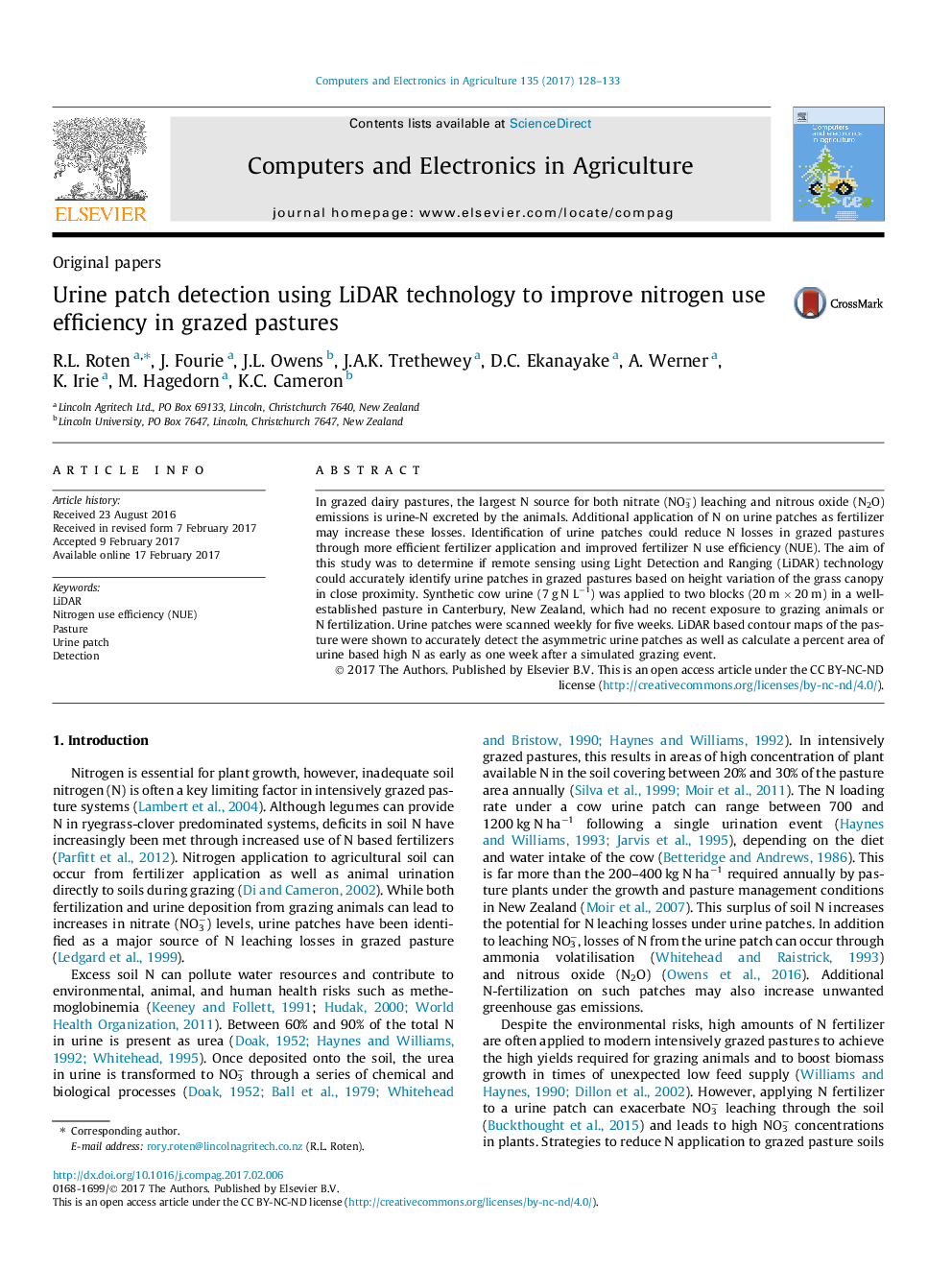| Article ID | Journal | Published Year | Pages | File Type |
|---|---|---|---|---|
| 6458766 | Computers and Electronics in Agriculture | 2017 | 6 Pages |
â¢A LiDAR methodology was examined to detect areas of high nitrogen by way of urination via dairy cows.â¢A validation study and proof-of-concept study illustrated that urine patches could be accurately located using LiDAR.â¢Further investigation will be needed to use these data in real-time to apply nitrogen fertilizer more sustainably.
In grazed dairy pastures, the largest N source for both nitrate (NO3â) leaching and nitrous oxide (N2O) emissions is urine-N excreted by the animals. Additional application of N on urine patches as fertilizer may increase these losses. Identification of urine patches could reduce N losses in grazed pastures through more efficient fertilizer application and improved fertilizer N use efficiency (NUE). The aim of this study was to determine if remote sensing using Light Detection and Ranging (LiDAR) technology could accurately identify urine patches in grazed pastures based on height variation of the grass canopy in close proximity. Synthetic cow urine (7 g N Lâ1) was applied to two blocks (20 m Ã 20 m) in a well-established pasture in Canterbury, New Zealand, which had no recent exposure to grazing animals or N fertilization. Urine patches were scanned weekly for five weeks. LiDAR based contour maps of the pasture were shown to accurately detect the asymmetric urine patches as well as calculate a percent area of urine based high N as early as one week after a simulated grazing event.
